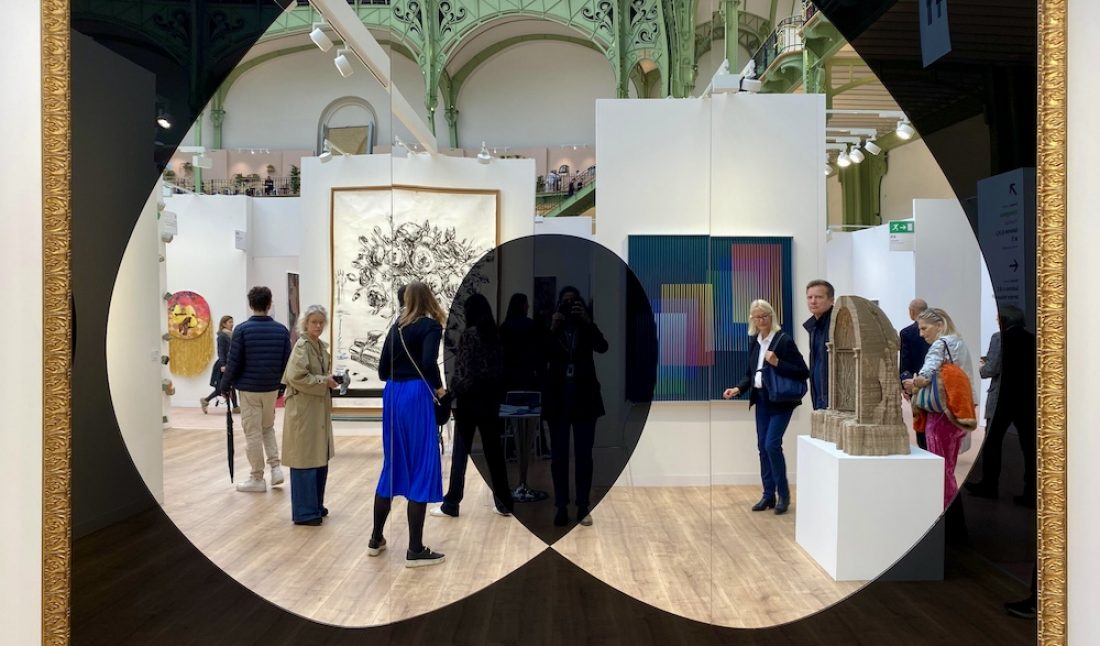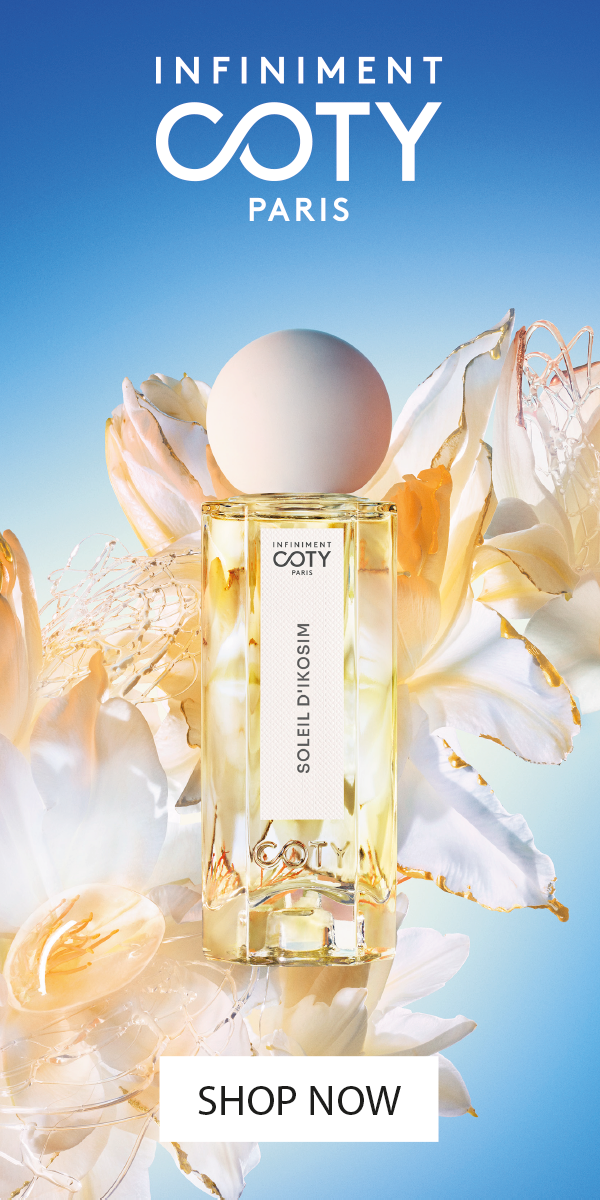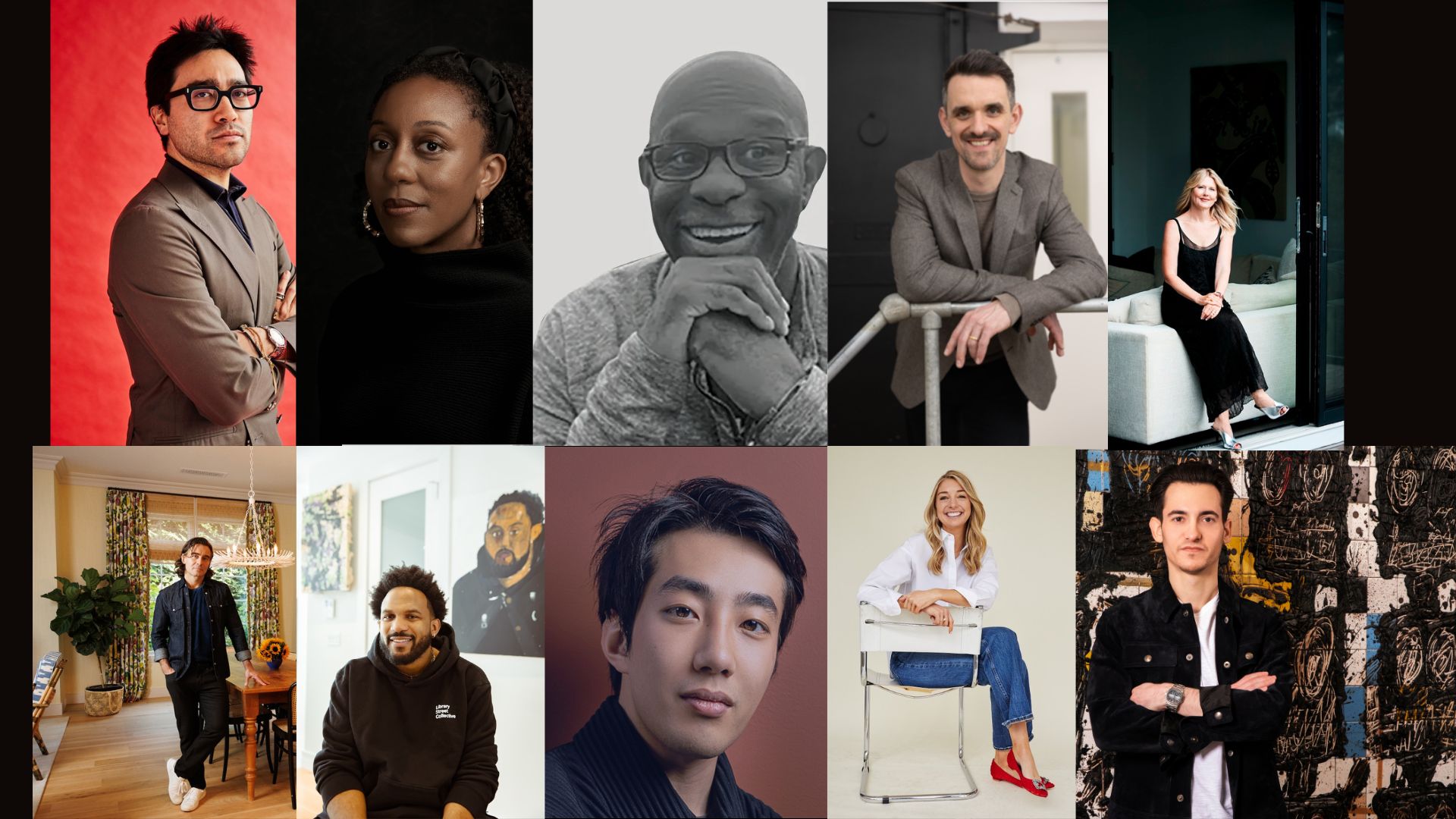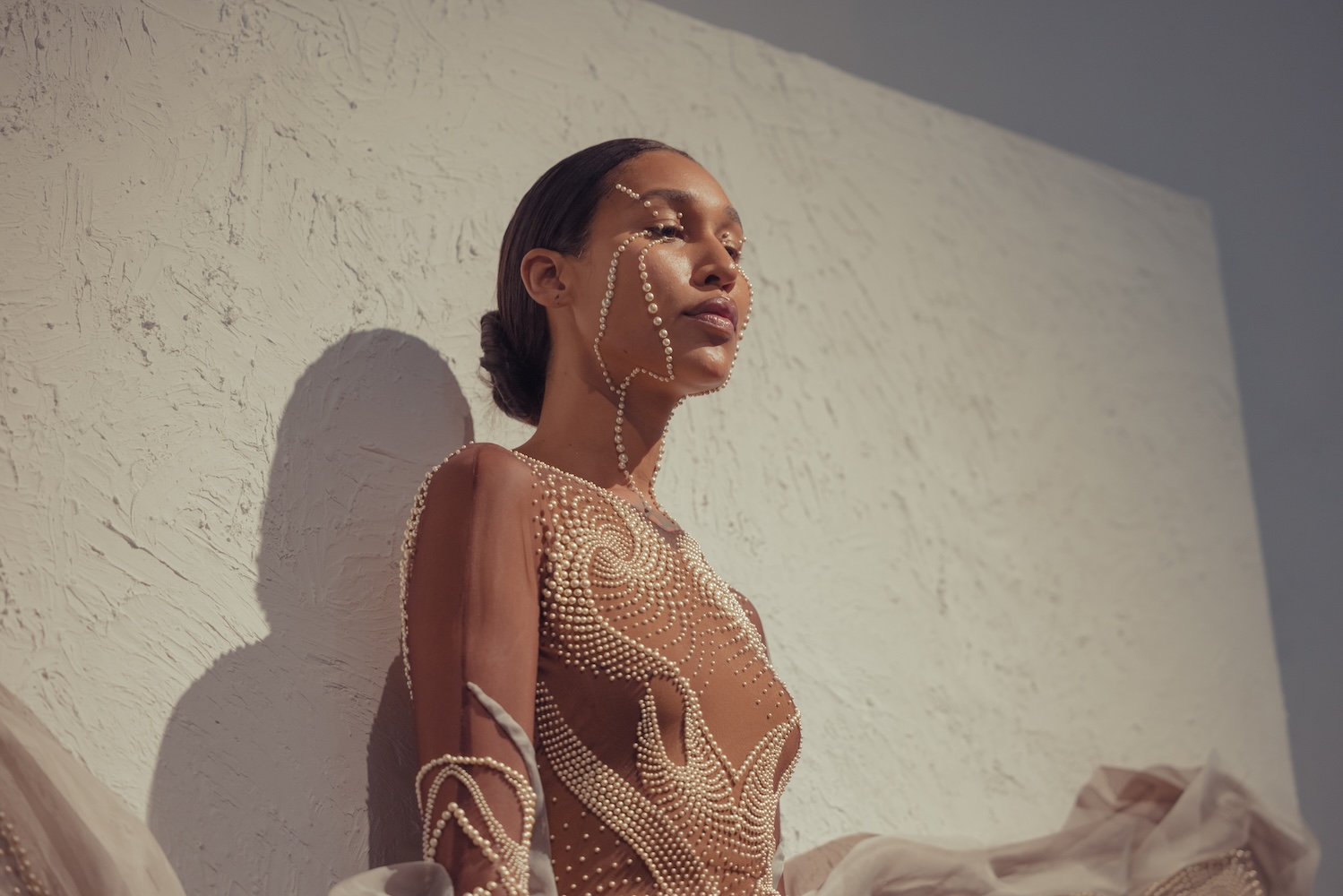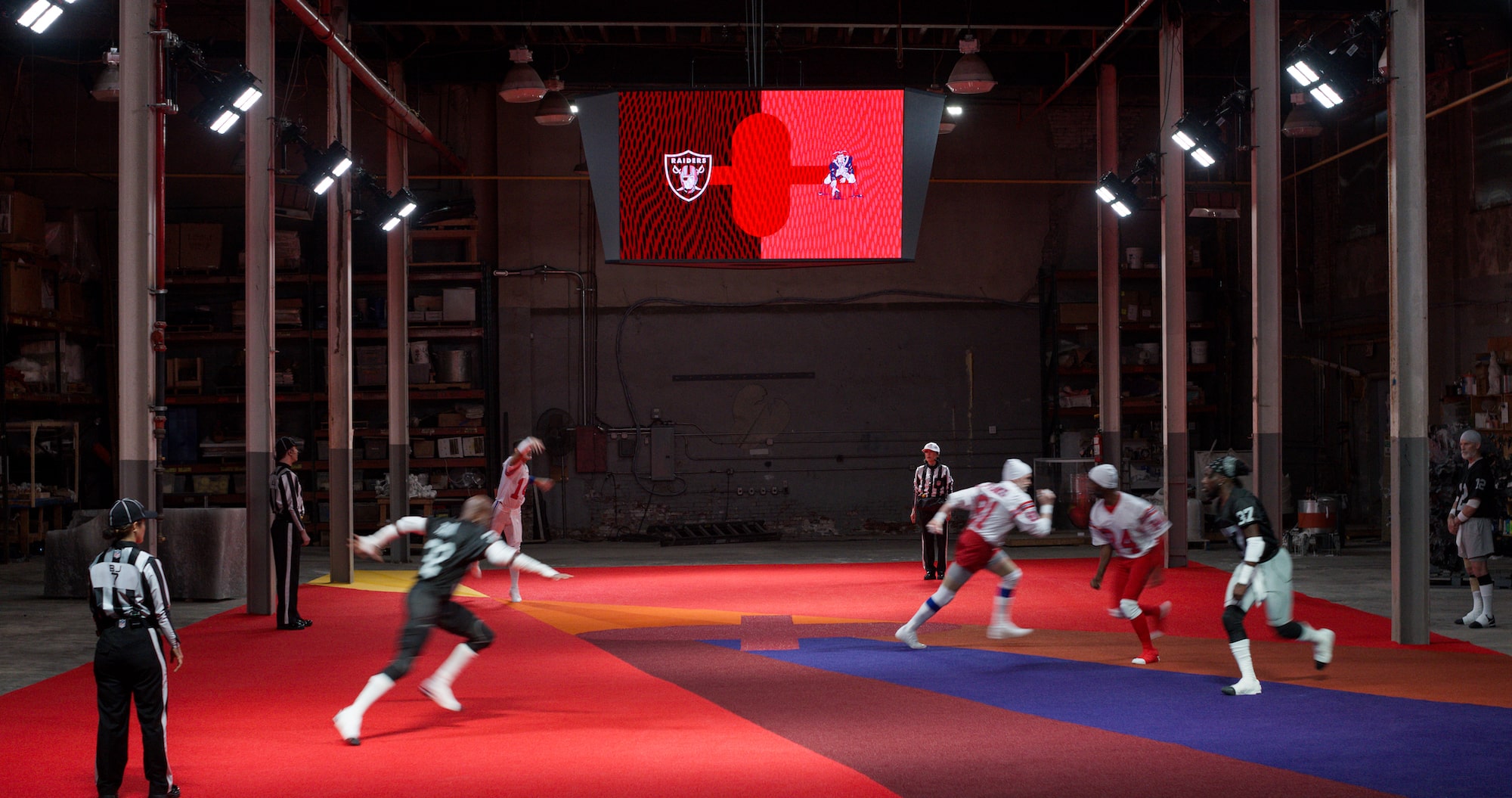The third edition of what is now known as Art Basel Paris marks a significant moment as it moved to the illustrious Grand Palais. Previously named Paris+ par Art Basel since 2022, the fair’s new name is now in line with its other locations in Basel, Miami Beach, and Hong Kong. As we navigated the grandeur of the venue, the diverse array of styles and mediums sparked endless curiosity and conversation, bridging the gap between the past and the avant-garde. In this review, we present our top picks from the fair—artworks that captivated our imagination and left a lasting imprint.
Galerie Sultana: Matthias Garcia, “Leimón,” 2023
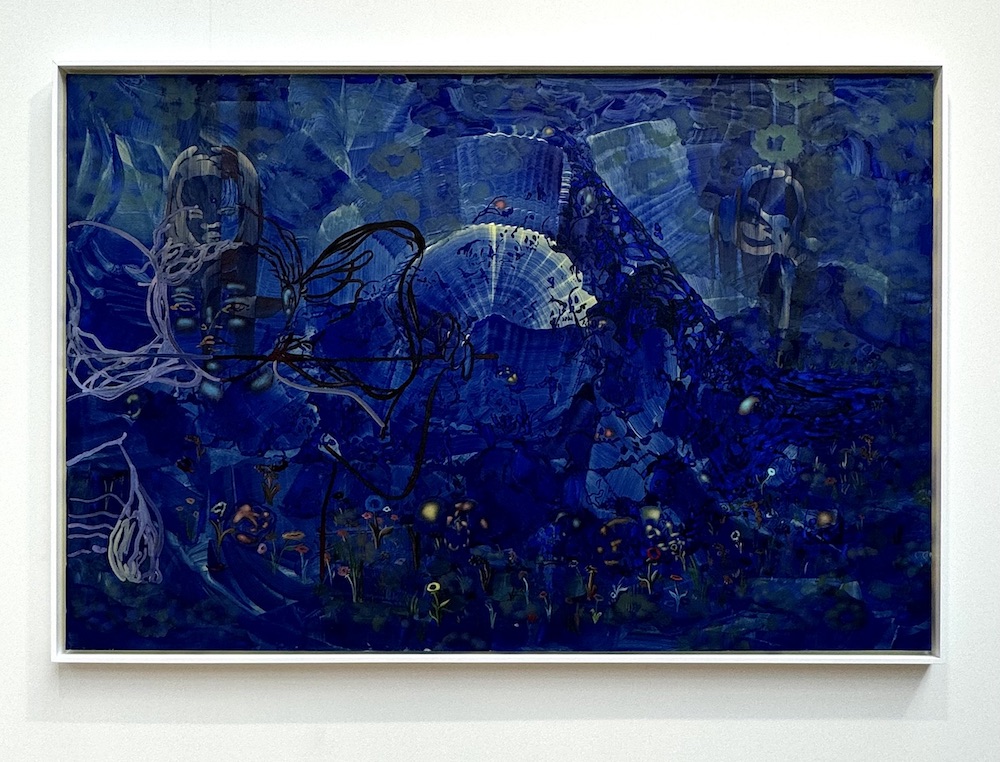 Matthias Garcia, “Leimón,” 2023.
Matthias Garcia, “Leimón,” 2023.
Born in 1994 in Paris, Matthias Garcia’s works are a captivating exploration of depth, color, and texture. The intricate layering of different shades and patterns creates an almost underwater dreamscape, inviting the viewer into a surreal world where figures and abstract forms merge seamlessly. This interplay between visibility and obscurity draws attention to themes of perception, fluidity, and the ephemeral nature of memory or dreams. The floral motifs near the bottom, subtly illuminated, bring an element of life amidst the otherwise abstract, ethereal composition, adding layers of complexity to Garcia’s immersive and contemplative piece.
Mariane Ibrahim: Amoako Boafo, “Cherry Blossom Dress,” 2024
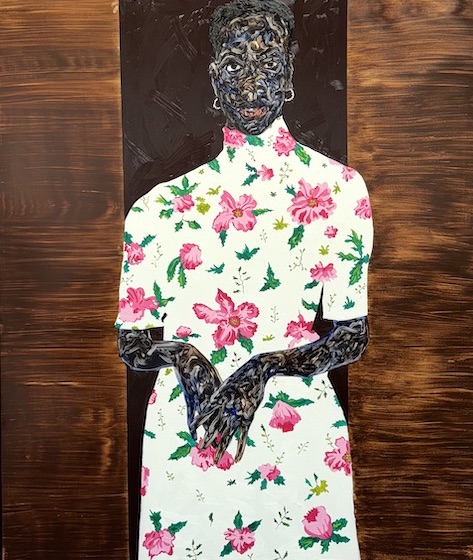 Amoako Boafo, “Cherry Blossom Dress,” 2024.
Amoako Boafo, “Cherry Blossom Dress,” 2024.
Born in Accra, Ghana in 1984, Amoako Boafo‘s approach to depicting Black bodies offers a fresh perspective, challenging and redefining how they are portrayed within the broader global narrative of Black culture. Known for his captivating finger-painted portraits, Boafo has made a significant mark on the history of portraiture, creating a unique style that draws viewers into a direct and intimate encounter with his subjects. His portraits, characterized by their boldness and clarity, invite a deep engagement, as his figures maintain a firm, steady gaze, confronting the viewer with a sense of strength and quiet resolve. The bold contrast between the figure’s intricate floral attire and their dark, textured skin tone draws immediate attention. Boafo’s largest institutional solo show to date, “Proper Belvedere” opens in Vienna on October 25.
White Cube: Marina Rheingantz, “Pink Panther,” 2024
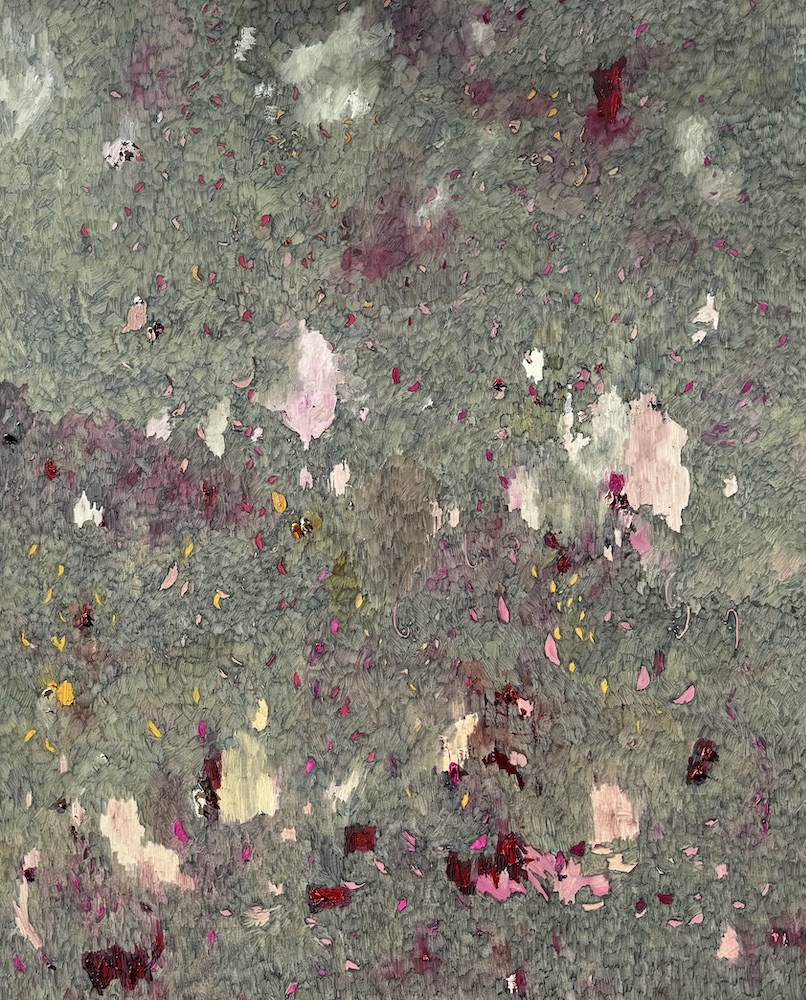 Marina Rheingantz, “Pink Panther,” 2024.
Marina Rheingantz, “Pink Panther,” 2024.
Marina Rheingantz, born in 1983 in Brazil and a former art resident of the Delfina Foundation, redefines landscape painting by portraying spaces that appear uninhabited and time that seems to linger, capturing fleeting details. Her technique involves varied paint applications, merging place with atmosphere, memory, and emotional ties. Rheingantz’s work explores seemingly deserted areas, rich with the passage of time and emotional resonance, such as wastelands, ruins, and training fields, serving as remnants of past activities.
Blum: Asuka Anastacia Ogawa, “Hana no e,” 2024
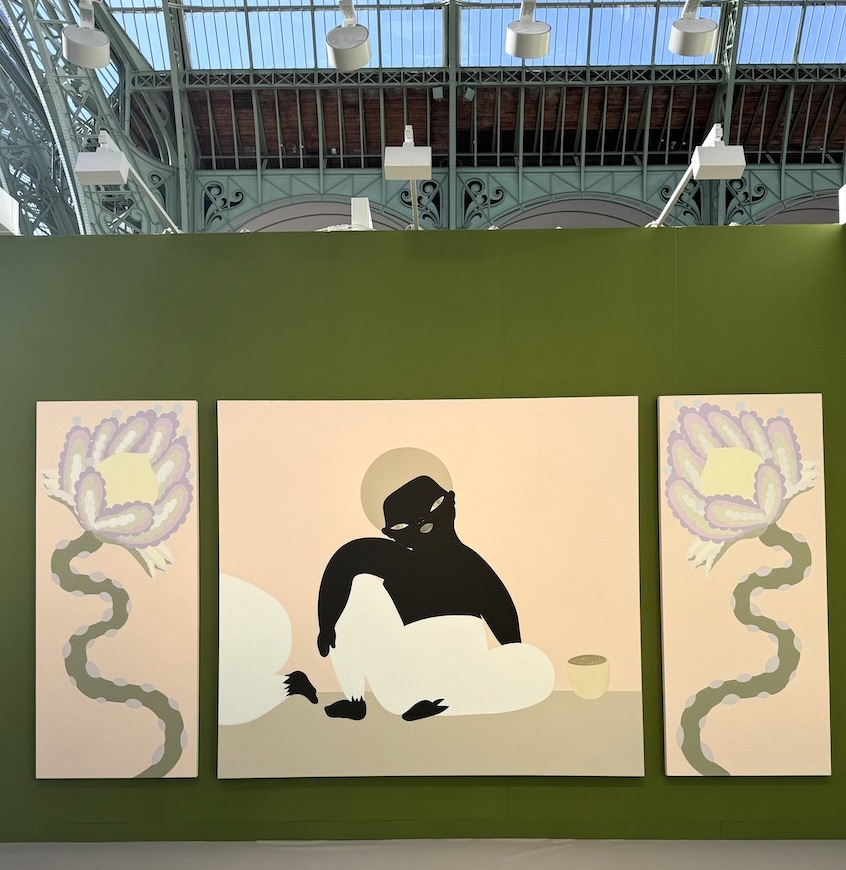 Asuka Anastacia Ogawa, “Hana no e,” 2024.
Asuka Anastacia Ogawa, “Hana no e,” 2024.
Asuka Anastacia Ogawa, born in 1988 in Tokyo, Japan, crafts expansive figurative artworks portraying androgynous children set in enchanting, dreamlike realms. These scenes are characterized by bold color fields and flat picture planes, with subjects whose wide, slender eyes directly engage the viewer. Ogawa’s creative process embraces raw spontaneity, capturing the essence of childhood wonder, curiosity, and playfulness.
P·P·O·W: Grace Carney, “Something Blue,” 2024
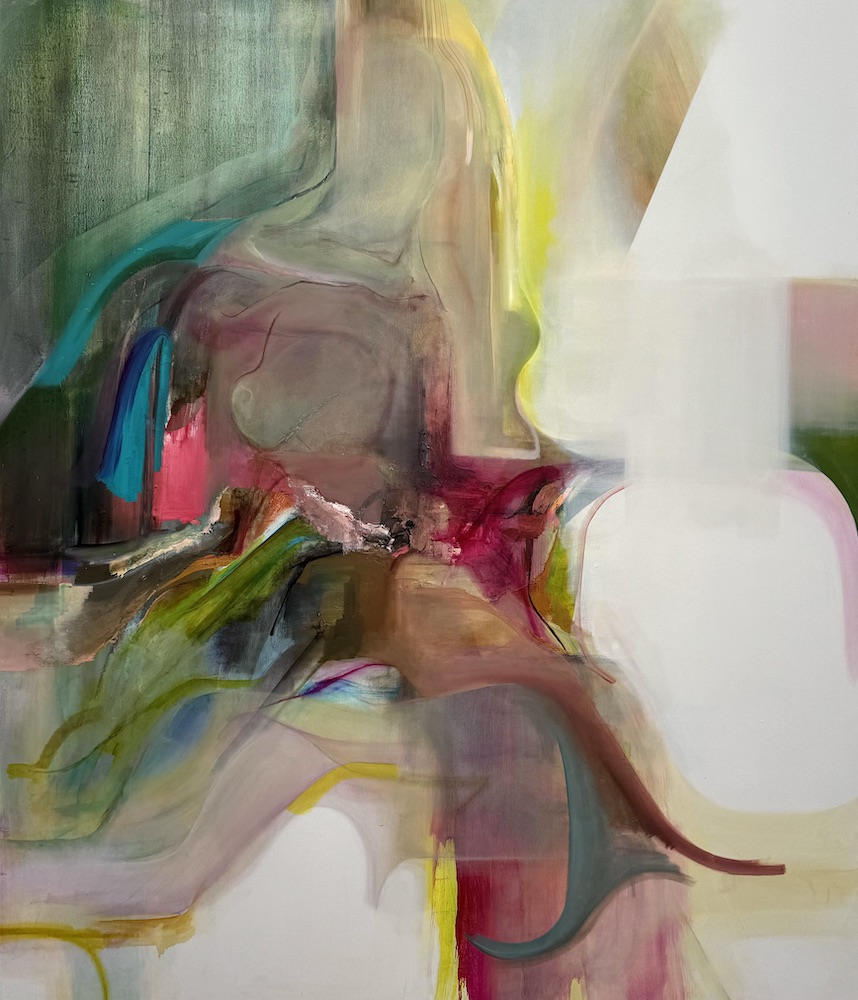 Grace Carney, “Something Blue,” 2024.
Grace Carney, “Something Blue,” 2024.
Grace Carney, born in 1992 in Minnesota, draws inspiration from Baroque and Renaissance art, literature, her personal experiences, and her own body to craft paintings that defy simple classification, hovering between abstraction and hints of figurative elements. Her work reflects a fascination with transitional spaces, embracing the inherent ambiguity and chaotic nature of the paint. Through the intricately layered surfaces of her canvases, Carney delves into the intricacies of contemporary life, exploring themes of self-determination and personal transformation.
Hauser & Wirth: Philip Guston, “Tears,” 1977
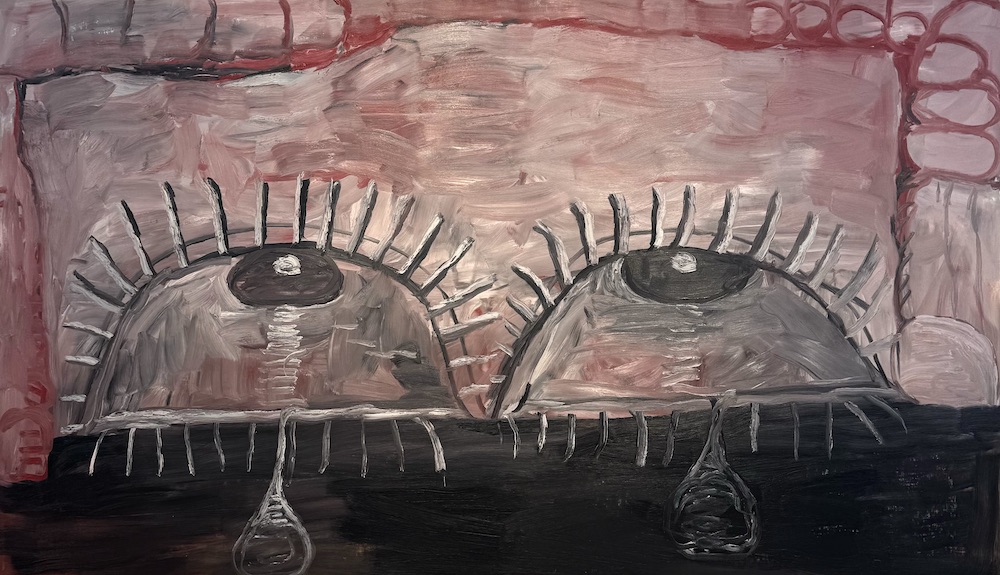 Philip Guston, “Tears,” 1977.
Philip Guston, “Tears,” 1977.
Philip Guston’s painting, inspired by his wife’s debilitating stroke, powerfully captures both personal and universal themes of aging, illness, and loss. At its heart is a figure’s eyes, whose sorrowful and distressed gaze is accentuated by a background of Guston’s signature cadmium red. This work marks Guston’s departure from abstraction, embracing a novel figurative approach that initially faced criticism for its dark, cartoon-like imagery. However, the paintings from Guston’s final years are now celebrated as important contributions to modern art.
Lévy Gorvy Dayan: Jeff Koons, “Wall Relief with Bird,” 1991
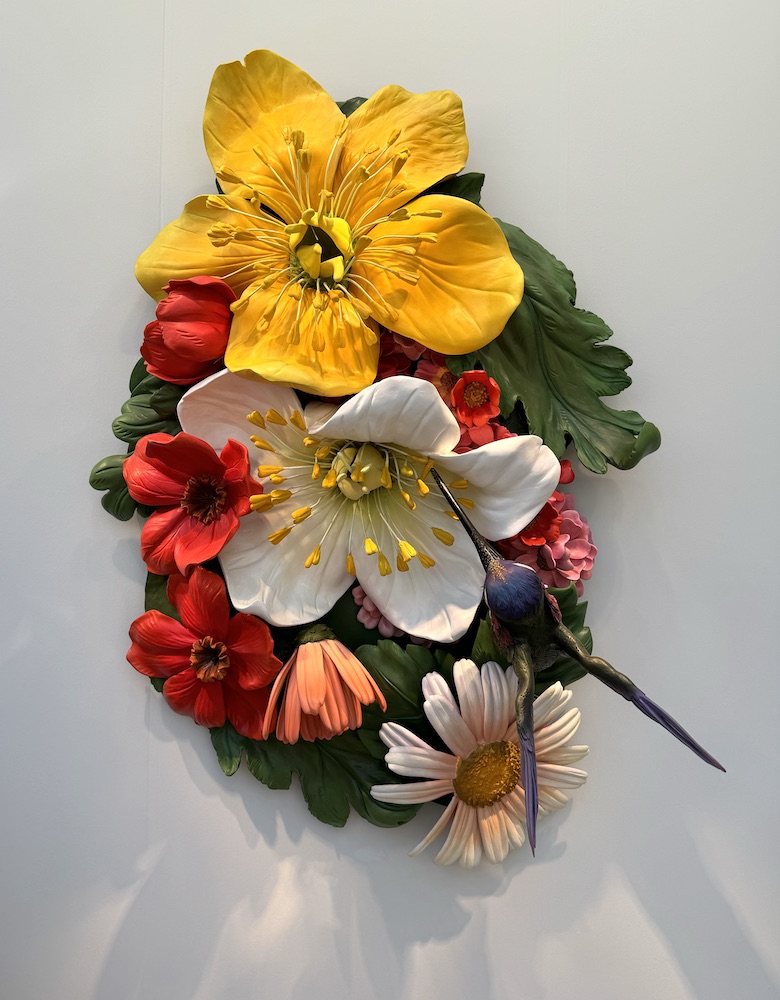 Jeff Koons, “Wall Relief with Bird,” 1991.
Jeff Koons, “Wall Relief with Bird,” 1991.
Born in Pennsylvania in 1955, Jeff Koons’s vivid wildflowers emerge from a rich green backdrop, their vibrant reds, pinks, whites, and yellows seemingly animated beyond their wooden forms. At the heart of this piece, a joyful hummingbird flits around a large white flower, sipping nectar and adding vitality to this idyllic scene. The relief celebrates an idealized vision of nature, teeming with life and abundance, and is imbued with a sense of sexuality. Jeff Koons shared in the exhibition catalog., New York, The Metropolitan Museum of Art, Regarding Warhol, 2012, “In Wall Relief with Bird there is a bird pollinating these large flowers. The imagery to me is about penetration. It’s also about fertility and pollination, and the eternal.”
Templon: Chiharu Shiota, “State of Being (Children’s Chair),” 2024
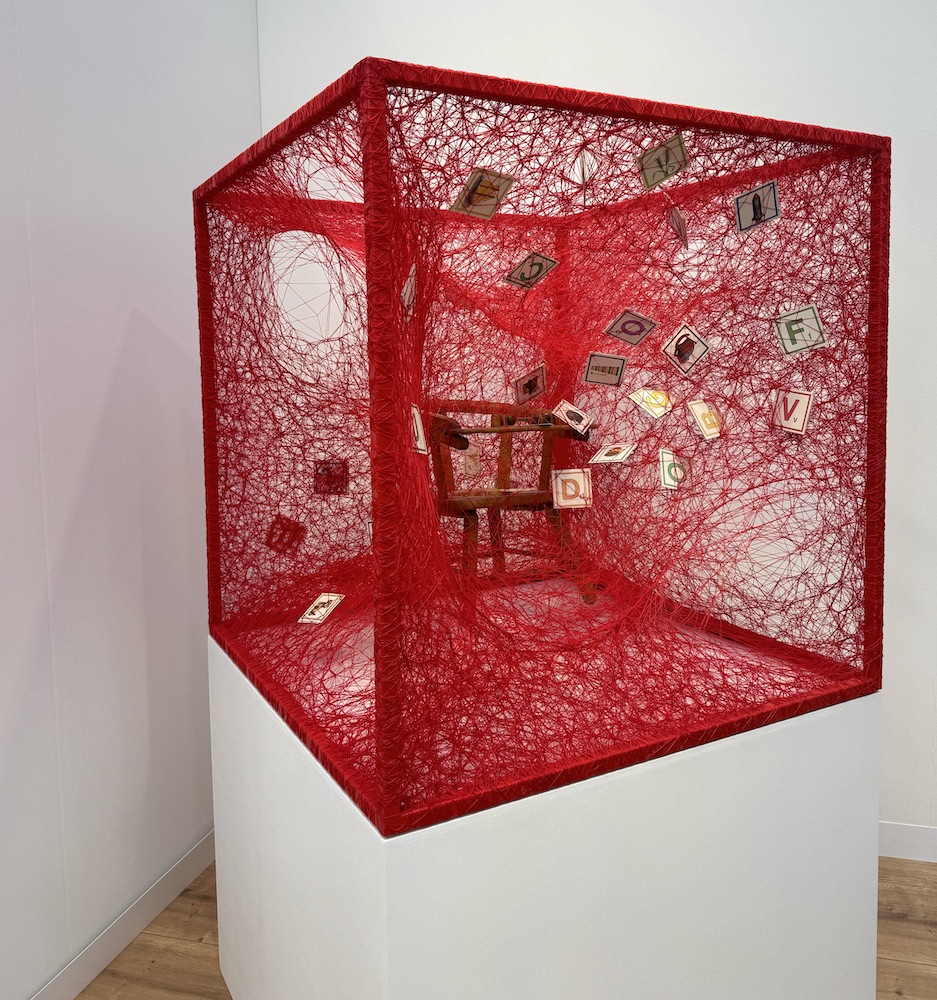 Chiharu Shiota, “State of Being (Children’s Chair),” 2024.
Chiharu Shiota, “State of Being (Children’s Chair),” 2024.
Chiharu Shiota, born in 1972 in Osaka, Japan, draws upon personal experiences and emotions for inspiration, transforming them into broader themes such as life, death, and human connections. She reimagines memory and consciousness by incorporating everyday items like shoes, keys, beds, chairs, and dresses, surrounding them with vast thread structures. Shiota’s versatile artistic style delves into themes of time, motion, and dreams, inviting viewers to connect with her work on both a physical and emotional level.
Thaddeus Ropac: Georg Baselitz, “Fortuna,” 2010
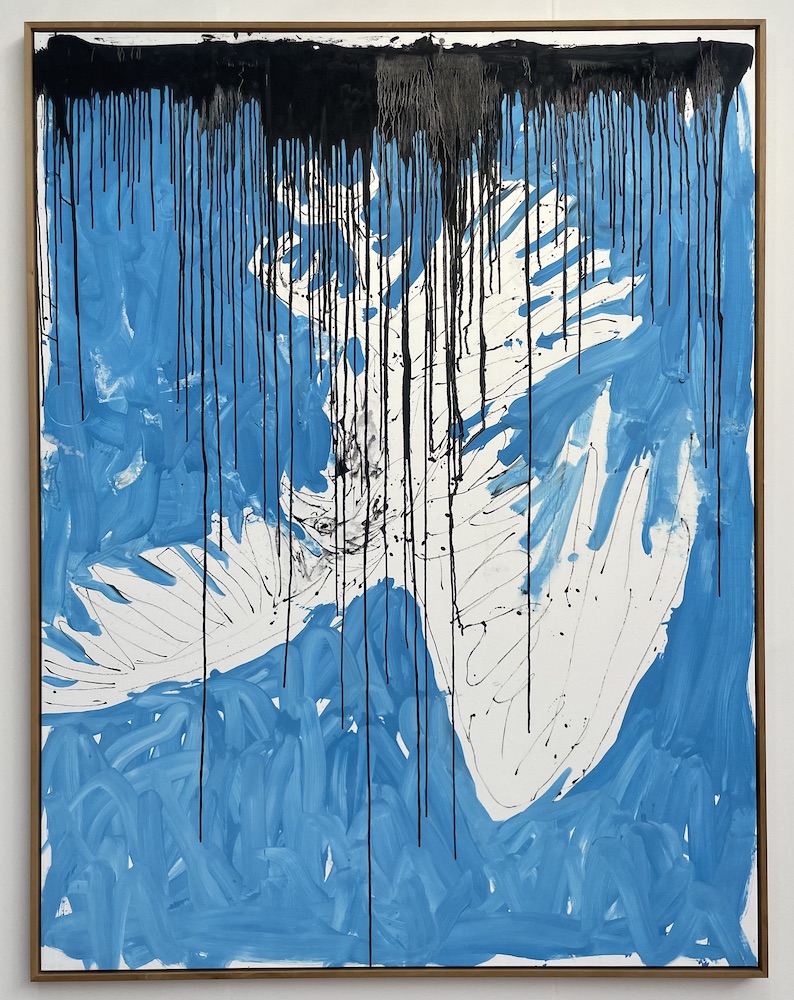 Georg Baselitz, “Fortuna,” 2010.
Georg Baselitz, “Fortuna,” 2010.
Georg Baselitz, born in Germany in 1938, known for his fascination with ambiguity, skillfully navigates between abstraction and figuration. The artwork features an eagle soaring through the air, shown upside down and partially veiled by cascading black paint. Baselitz chooses to portray the eagle, which represents power and freedom, as part of his ongoing investigation into themes of identity and authority. By painting on the floor and then rotating the canvas on the wall, he accentuates the abstract nature of his pieces, prompting viewers to challenge their existing perceptions of perspective and representation.
Galleria Continua: Michelangelo Pistoletto, “Buco Nero,” 2010
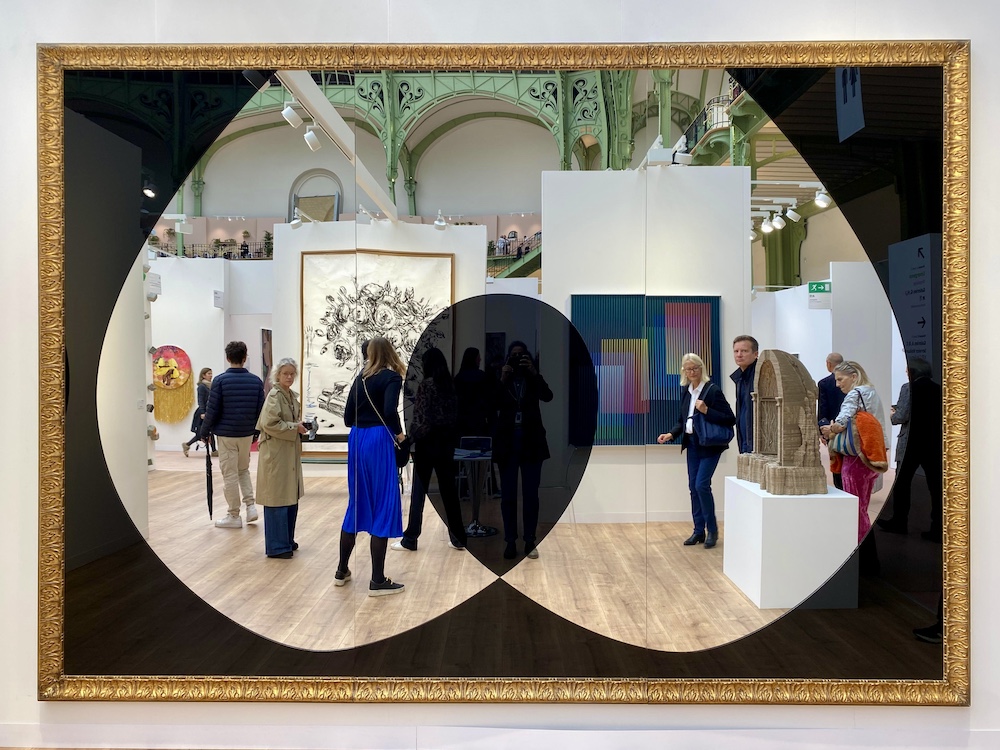 Michelangelo Pistoletto, “Buco Nero,” 2010.
Michelangelo Pistoletto, “Buco Nero,” 2010.
Michelangelo Pistoletto, born in Italy in 1933, is a pivotal figure in the evolution of Arte Povera and Conceptualism. Pistoletto’s Mirror Paintings are central to his artistic and theoretical exploration, serving as the foundation for his work. Unlike the traditional Renaissance perspective, which served as a forward-focused illusionary window onto the world, the mirror painting introduces a dual perspective. It reveals both the front and back, creating a seamless connection between art and life. This approach extends the setting into the artwork’s virtual space, acting as a gateway that merges the two realms.
Andréhn-Schiptjenko: Martin Jacobson, “My Future Home IV,” 2024
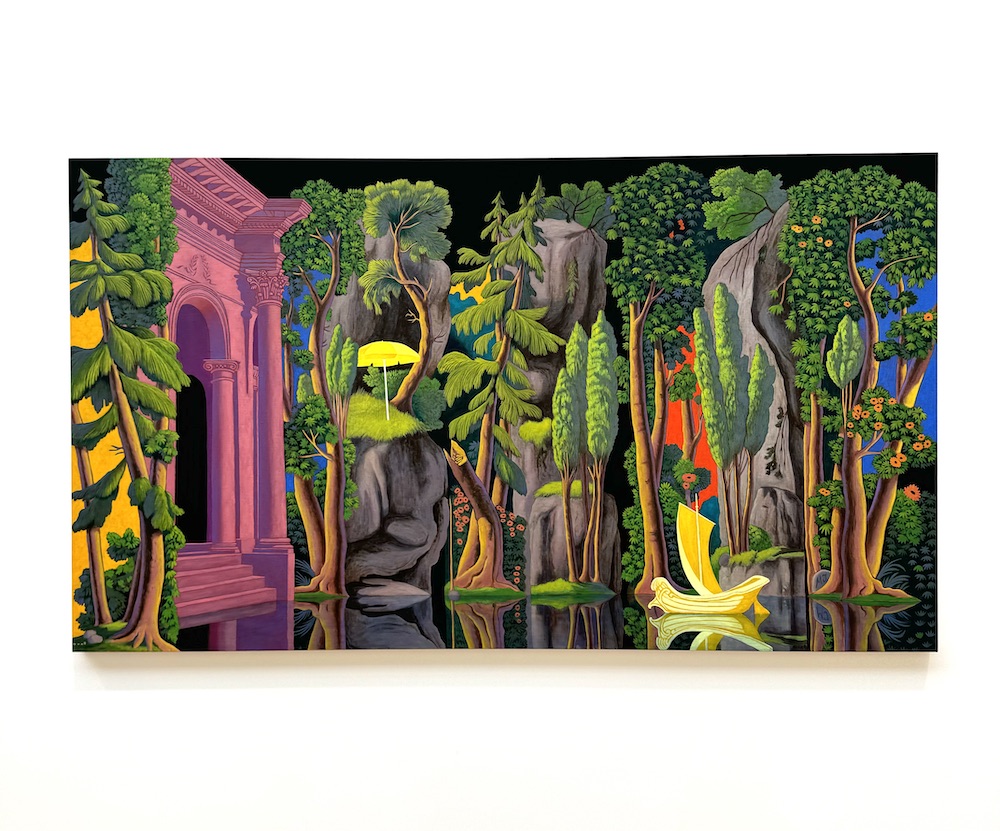 Martin Jacobson, “My Future Home IV,” 2024.
Martin Jacobson, “My Future Home IV,” 2024.
Born in Sweden in 1978, Martin Jacobson’s artistic process involves taking existing imagery of classic motifs and themes, such as sunsets, forests, mythological figures, and architectural designs, and transforming them into new motifs. He employs a palette that often features vivid and almost surreal colors. By reinterpreting these original elements, Jacobson crafts images that simultaneously feel both novel and familiar, both recognizable and mysterious. His work captures an essence of light and color dynamics, cultural allusions, and emotional responses, creating a theatrical scene where fiction and reality converge. In this setting, beauty is portrayed in its dual nature, as both captivating and disquieting.






